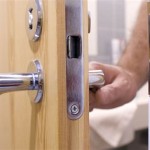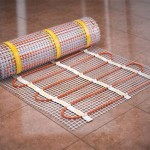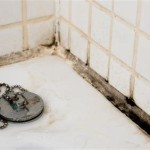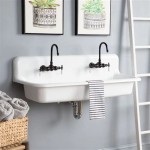Parts Of A Bathroom Sink
Bathroom sinks are an essential part of any bathroom, and they come in a variety of styles and materials. No matter what type of sink you choose, it's important to be familiar with the different parts of a bathroom sink so that you can properly care for it.
The main parts of a bathroom sink include the sink basin, the faucet, the drain, and the overflow hole. The sink basin is the bowl-shaped part of the sink that holds the water. The faucet is the device that controls the flow of water into the sink. The drain is the hole in the bottom of the sink that allows water to drain out. The overflow hole is a small hole located near the top of the sink that prevents water from overflowing the sink.
In addition to these main parts, bathroom sinks may also have other features, such as a soap dispenser, a towel bar, or a drain stopper. These features can make your sink more convenient and functional.
Here is a more detailed look at each of the main parts of a bathroom sink:
Sink Basin: The sink basin is the bowl-shaped part of the sink that holds the water. Sink basins can be made from a variety of materials, including porcelain, ceramic, stainless steel, and cast iron. Porcelain and ceramic sinks are the most common type of sink basin, and they are available in a wide range of colors and styles. Stainless steel sinks are durable and easy to clean, but they can be more expensive than porcelain or ceramic sinks. Cast iron sinks are the most durable type of sink basin, but they are also the most expensive.
Faucet: The faucet is the device that controls the flow of water into the sink. Faucets can be mounted on the sink basin, the wall, or the countertop. There are a variety of different types of faucets available, including single-handle faucets, double-handle faucets, and touchless faucets. Single-handle faucets are the most common type of faucet, and they are easy to use and control. Double-handle faucets have two handles, one for hot water and one for cold water. Touchless faucets use a sensor to turn on and off the water, which can be more hygienic than traditional faucets.
Drain: The drain is the hole in the bottom of the sink that allows water to drain out. Drains can be made from a variety of materials, including metal, plastic, and rubber. Metal drains are the most durable type of drain, but they can be more expensive than plastic or rubber drains. Plastic drains are lightweight and easy to install, but they can be less durable than metal drains. Rubber drains are flexible and can be used to connect sinks to drains that are not perfectly aligned.
Overflow Hole: The overflow hole is a small hole located near the top of the sink that prevents water from overflowing the sink. Overflow holes are typically located on the back or side of the sink basin. If the water level in the sink rises too high, the water will overflow through the overflow hole and into the drain.
By understanding the different parts of a bathroom sink, you can properly care for your sink and keep it functioning properly for years to come.

How To Fit A Bathroom Sink Diy Guides Victorian Plumbing

20 Bathroom Sink Drain Parts How They Works Stopper Plumbing

Parts Of A Sink The Home

Bathroom Sink Parts Diagram Plumbing Drain

Parts Of A Sink The Home

Bathroom Sink Plumbing Drain Diagram

How To Replace Bathroom Sink Stopper Avg Cost 25 65 1 2hrs
How To Install Bathroom Sink Drain Queen Bee Of Honey Dos

High Quality Decorative Improvement Sink Spare Parts Bathroom Kit 8pc Chrom

Valley Single Handle Bathroom Faucet Repair Parts







